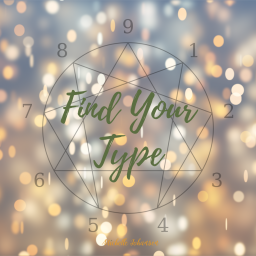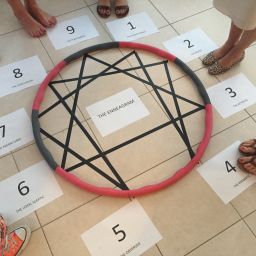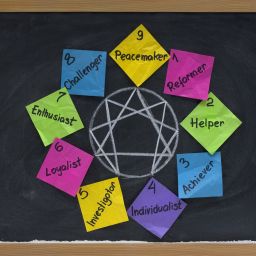If you’ve ever been out to dinner with someone who has just discovered the Enneagram, it’s quite likely you ended the evening with a classic case of Enneagram earache after they talked of nothing else all evening… resulting either in your interest in the Enneagram being ignited or leaving you wondering quite what everyone was drinking! Catching the Enneagram bug can have that effect, opening a door to a lifetime of deep, self-discovery. It can also help hugely in our understanding of our family members, as well as increasing our awareness of what makes our friends and work colleagues tick.
With its roots in antiquity, the Enneagram combines ancient spiritual wisdom with modern depth psychology developed over the last 40 years, to present us with a map of self discovery; revealing the lens through which we habitually view the world and how different that might be from the 8 other lenses favoured by different people in our lives.
When I first discovered the Enneagram 20 years ago, it felt like coming home. As I read the pages on my type, it was as if it was written especially for me, like someone out there understood me better than I understood myself. I felt seen in a way I’d never felt seen before. Not just in all the positive aspects of my personality structure but also the less savoury bits, the parts I’d been trying to hide from view. Somehow knowing I wasn’t alone in my struggles, that in fact what I’d taken as personality defects were just quirks of my type, made me feel a lot less broken. Especially knowing that other people with the same type experienced life in a similar way. It seems to be part of our human experience to be hard on ourselves, and sometimes downright brutal in our self-criticism. Somehow, we never seem to match up to our own desired standards, which is not helped by Instagram’s never-ending stream of other people’s ideal lives… and thighs!
Working with the Enneagram is a great way to help us really understand the human condition, i.e. that we can only ever be perfect in our imperfection. And counter-intuitively, that improved mental health really arises as we gradually let go of the very coping strategies we’ve been grasping hold of in our attempts towards self-improvement.
Over the years I’d got used to people saying “the Enneawhat?” wherever it was mentioned, so it was a total surprise a few years ago when talking to a millennial friend, they came right back at me with their type. Unknown to me the online world had exploded with Enneagram sites, tests, YouTube videos, memes and Instagrammable sound bites, making what I did for a living suddenly in vogue! It’s fabulous that so much Enneagram information is now available at our fingertips, however the Enneagram is a complex body of work which can take many years to fully understand and digest, so a lot is lost when types are reduced to stereotypical memes.
Having said that, we do have to start somewhere, so here is my list of the 9 types and their positive characteristics:
The 9 Enneagram Types At Their Best
1. The Reformer – principled, idealistic and orderly
2. The Helper – nurturing, attentive and helpful
3. The Achiever – excelling, efficient and competent
4. The Individualist – unique, sensitive and creative
5. The Investigator – perceptive, inventive and solitary
6. The Loyal Sceptic – reliable, persevering team players
7. The Adventurer – enthusiastic, adventurous and energetic
8. The Challenger – powerful, strong and big hearted
9. The Peacemaker – peaceful, agreeable and mediating
The type numbers are value neutral. People of all types in the healthy range are fabulous human beings, but most of us live from the average range meaning we are a combination of our good points and the behaviours that trip us up on a daily basis, especially in our relationships with others. I refer to these less desirable traits as being our characteristics on “messy days”. So let’s list those now:
The 9 Enneagram Types On Messy Days
1. The Reformer – critical, judgmental and rigid
2. The Helper – intrusive, manipulative and needy
3. The Achiever – competitive, driven and unfeeling
4. The Individualist – moody, self-absorbed and pessimistic
5. The Investigator – withholding, detached and cynical
6. The Loyal Sceptic – anxious, indecisive and complaining
7. The Adventurer – scattered, hyperactive and inappropriately up-beat
8. The Challenger – dominating, hard-driving and controlling
9. The Peacemaker – withdrawn, stubborn and non-communicative
The beauty of working with the Enneagram is we gradually become more aware of our patterns and through consciously choosing to do things differently, we can gain more freedom. We learn how we wind other people up and probably best of all, not to take what they do personally. You never know – give it a try and maybe you will be the one bending everyone’s ears next time you’re out to dinner with family or friends!
Ok, but you want to know which type you are right? To find out your Enneagram type, you can take a free online test at The Enneagram Personality Test.






